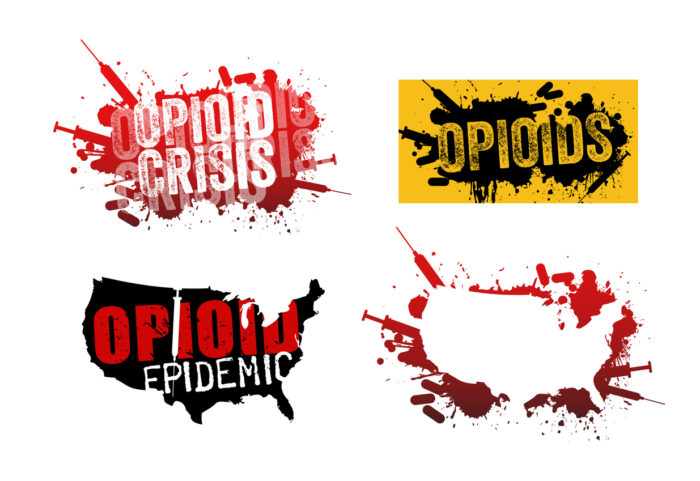Can HEAL Do It For America’s Opioid Epidemic?
Government Initiative Promises $1.1 Billion in Research Funds
The U.S. Department of Health & Human Services’ National Institutes of Health has launched a brand-new – and much-necessary – initiative to combat the country’s opioid epidemic if a person wants to get help with the addiction.
HEAL, an acronym for Helping to End Addiction Long-term, was introduced at the 2018 National Rx Drug Abuse & Heroin Summit in Atlanta by NIH Director Dr. Francis Collins. HEAL not only will explore scientific solutions to slow the public-health crisis but also will nearly double resources to $1.1 billion, from $600 million, for evidence-based studies.
“Every day, more than 115 Americans die after overdosing on opioids,” Dr. Collins said in a new release titled “NIH launches HEAL Initiative, doubles funding to accelerate scientific solutions to stem national opioid epidemic.” “That is a four-fold increase since 2000, and the numbers continue to climb. NIH has been deeply invested in efforts to counter this crisis through research, but we are determined to do even more. Over the last year, NIH has worked with stakeholders and experts across scientific disciplines and sectors to identify areas of opportunity for research to combat the opioid crisis. The focus of these discussions has centered on ways to reduce the over prescription of opioids, accelerate development of effective non-opioid therapies for pain, and provide more flexible options for treating opioid addiction. NIH is committed to bringing the full power of the biomedical research enterprise to bear on this crisis.”
Those are strong words, but strong words are needed to prevent tragic deaths from addictive drugs manufactured by a profiting Big Pharma.
“This nationwide crisis stemmed initially from over-prescribing of opioid medications to treat pain,” Dr. Walter Koroshetz, director of the NIH’s National Institute of Neurological Disorders and Stroke. “The HEAL Initiative will develop the scientific evidence that informs best practices to effectively treat patients with pain while preventing addiction. A major focus will be to understand why some people go from acute to chronic pain, with the intent to prevent that transition. Importantly, the Initiative will drive the science to enable the development of powerful, non-addictive pain treatments that would limit the need for opioid medications in the future.”
HEAL will work with partner agencies at both the state and federal levels to conduct pilot projects in areas with high rates of opioid overdoses. The goal is to gain a better understanding of how an estimated two million Americans with acute or chronic pain developed their addictions.
“Science and technology have illuminated our understanding of the mechanisms underlying addiction,” said Dr. Nora Volkow, director of the National Institute on Drug Abuse. “With these additional resources, we can develop more customized, high-quality treatments for addiction and pain, as well as harness implementation science to bring evidence-based changes to our healthcare system, including treatment for those in the criminal justice environment.”
In 2016, the latest year for which statistics are available, 42,249 died from opioid overdoses, nearly 950,000 used heroin – 170,000 of whom used the illegal substance for the first time – and 15,469 died from it. The estimated economic impact from all of the above was $504 billion.
“In the late 1990s, pharmaceutical companies reassured the medical community that patients would not become addicted to opioid pain relievers and healthcare providers began to prescribe them at greater rates,” the HHS Web site states. “Increased prescription of opioid medications led to widespread misuse of both prescription and non-prescription opioids before it became clear that these medications could indeed be highly addictive. In 2017 HHS declared a public health emergency and announced a 5-Point Strategy To Combat the Opioid Crisis.”
Bad behavior by Big Pharma led officials in Arkansas to sue 52 distributors calling on them to cover the costs of fixing the problem. The suit was filed in Crittenden County Circuit Court by a pair of law firm representing 215 cities and all 75 counties.
“The basic claim is that these entities concealed, or misrepresented, the harmful and addictive properties of the medications they made,” reports the Arkansas Democrat-Gazette in an article titled “Pulaski County joins opioids suit but still pursues own case.” “As a result, Arkansans suffered. The counties and cities involved are asking a jury to rule that these manufacturers, retailers, prescribers and distributors should pay for treatment.”
The case is championed by Association of Arkansas Counties Executive Director Chris Villines, who said it is a one-of-a-kind approach because it presents united front.
“It’s not only a county problem or only a city problem,” Villines said. “It’s a blurred problem. In addition to all 75 counties joining, more than 210 cities are now part of the case, and that number could still grow. Everything about this lawsuit seems to evolve every day.”
Share This



